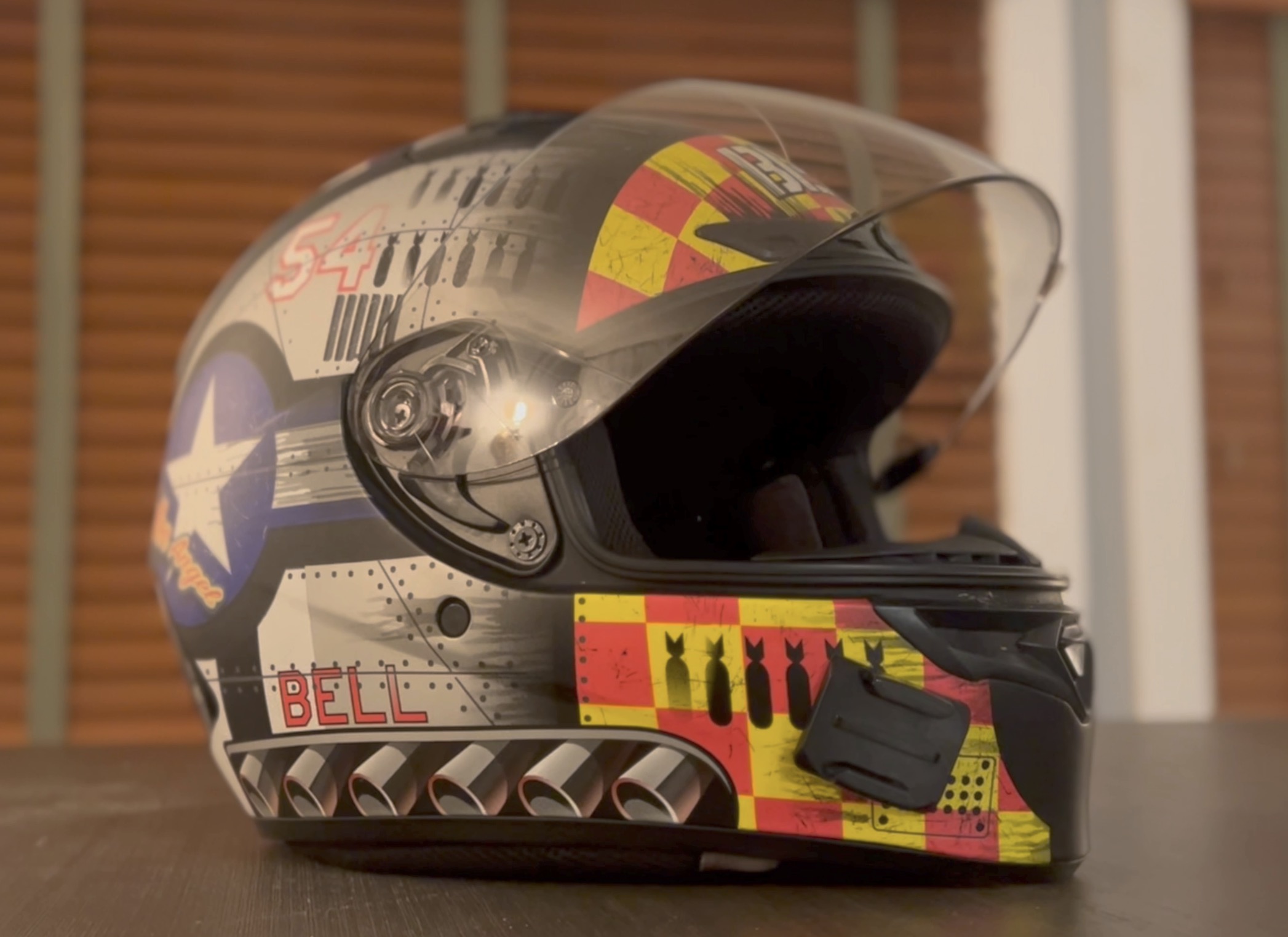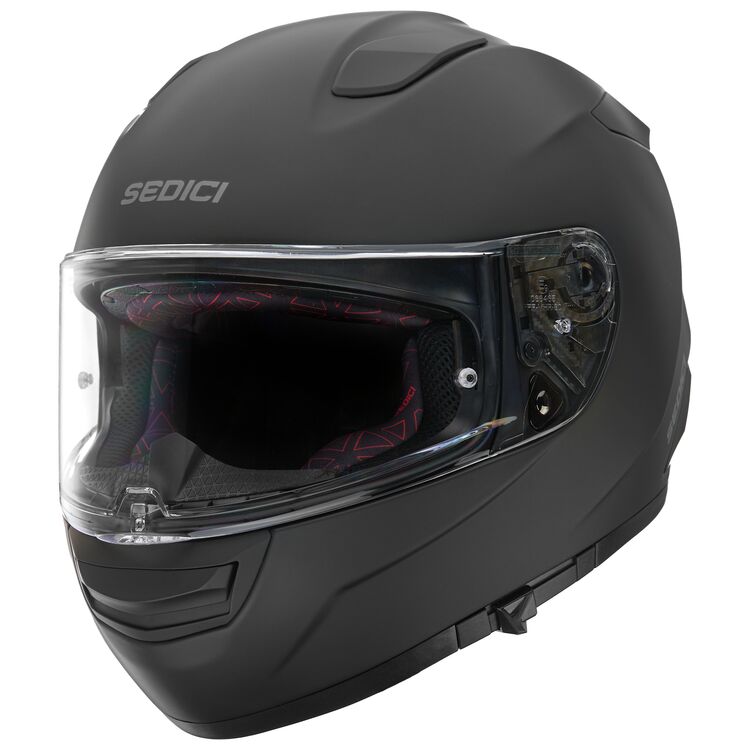
Bell Qualifier DLX Mips Helmet: Safety and Comfort Above Its Price
left for contents
The Bell Qualifier DLX Mips helmet packs much more than its budget price would seem to suggest. While it sports the standard polycarbonate shell and simple design, it delivers solid build quality and several standout features which are rare in helmets of its price range (and even twice the price)
A couple of the main differentiating features we’ll get in to:
- ProTint photochromic shield that changes with the sun. Forget swapping visors or stuffing sunglasses between your helmet and your melon—this shield adapts to lighting conditions automatically.
- High level of ventilation—for better or worse. In the summer, the airflow is a dream, keeping you cool on humid rides. In winter? That same ventilation can be a bit too much, making a balaclava almost mandatory in freezing temperatures.
- Mips safety tech is a rare treat. The Multi-Directional Impact Protection System (Mips) helps reduce rotational forces on impact—something you usually see in helmets that cost significantly more.
The Armchair Bikers team has been wearing the Bell Qualifier DLX Mips for a year and a half, covering thousands of miles through the humid summers and frigid winters of Upstate New York. I’ve installed a Cardo Packtalk Edge inside it, worn it around town, and taken it on longer highway hauls.
So, does this budget-friendly lid punch above its weight class, and what compromises do you need to know about? Let’s dive in.
With Mips force-reduction safety tech and a photochromatic visor that changes with the sun, this lid punches way above it's budget weight class.
- Excellent airflow keeps you cool on hot rides
- MIPS adds enhanced rotational impact protection
- Photochromic visor adapts to changing light
- Comfortable liner, easy to wash and adjust
- Noticeable wind noise, especially above highway speeds
- Feels cold in low temps due to strong ventilation
Watch This Review
What We Love
When you first unbox the Bell Qualifier DLX Mips, a few things stand out immediately. First, the helmet has an aggressive, aerodynamic design that looks more expensive than its price tag suggests. The polycarbonate shell is lightweight at 3.57 lbs, and the inclusion of the ProTint photochromic shield (which automatically adjusts to lighting conditions) is an unexpected bonus—especially at this price point.
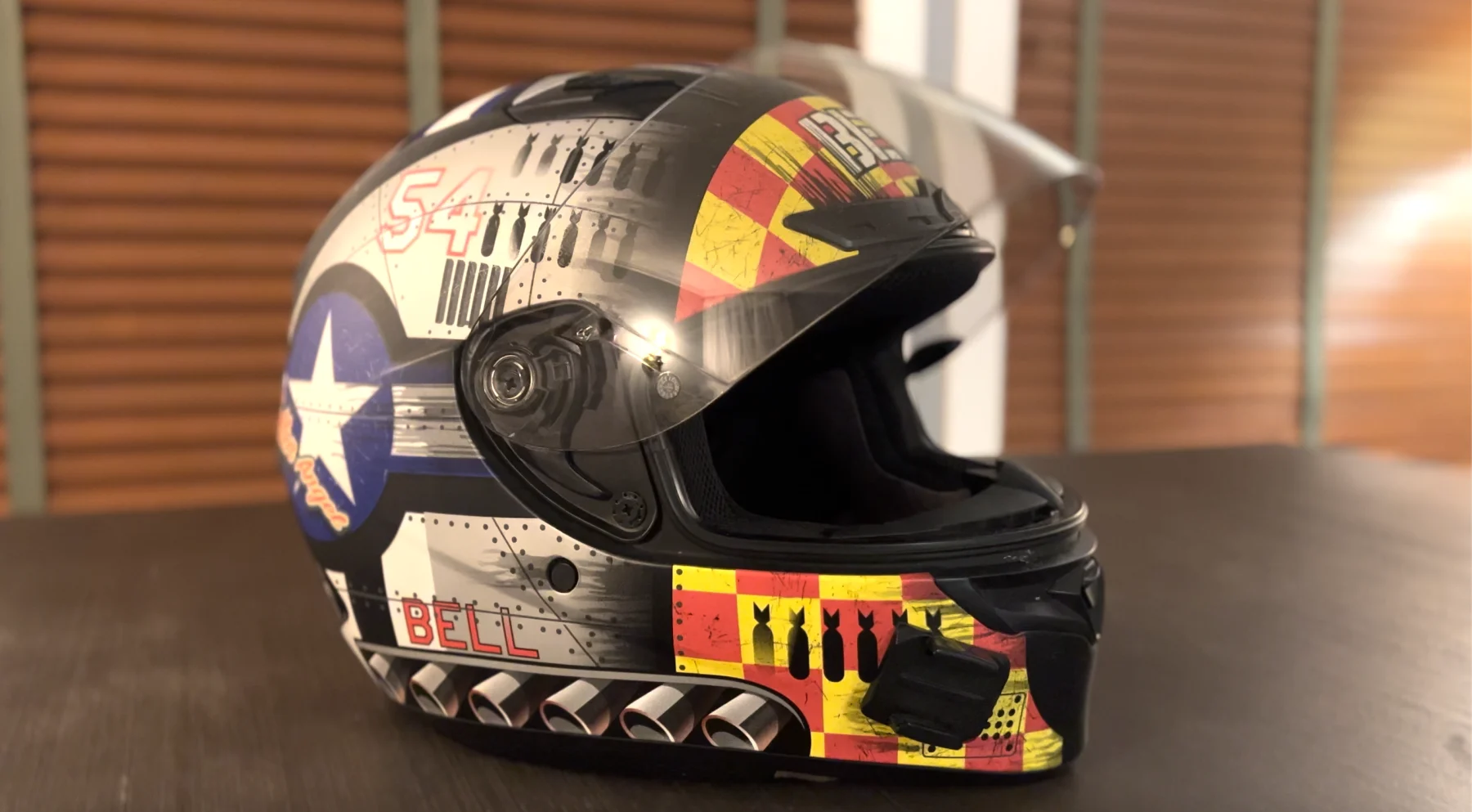
Key Features at a Glance
- Mips Technology: The Multi-Directional Impact Protection System (Mips) is designed to reduce rotational forces in an impact—something usually found in premium helmets.
- ProTint Photochromic Shield: Automatically darkens in sunlight and clears up in low-light conditions, eliminating the need for a second visor or sunglasses.
- ClickRelease Shield System: Quick and tool-free visor swaps, though durability could be better (more on that later).
- Ventilation System: Adjustable vents for airflow and cooling, with a padded wind collar to help reduce noise.
- Integrated Speaker Pockets: Makes adding a Bluetooth communicator like the Cardo Packtalk Edge or Sena 50S incredibly easy.
- DOT Certified: As one would expect – legally a helmet by US standards.
Photochromatic Shield
One of my favorite features is the integrated ProTint photochromic shield. On my daily commute, I’ve found that starting the day in the early morning sunshine can be a blessing and a curse. Without a photochromic shield, I would have been forced to either strap on sunglasses underneath my helmet or risk the glaring sun interfering with my ride. Instead, the ProTint shield automatically darkens as the sunlight intensifies, allowing me to ride comfortably without additional gear cluttering my setup. By the time I’m heading home, the same shield returns to its clear state, sparing me the hassle of stashing an extra clear visor in my bag.
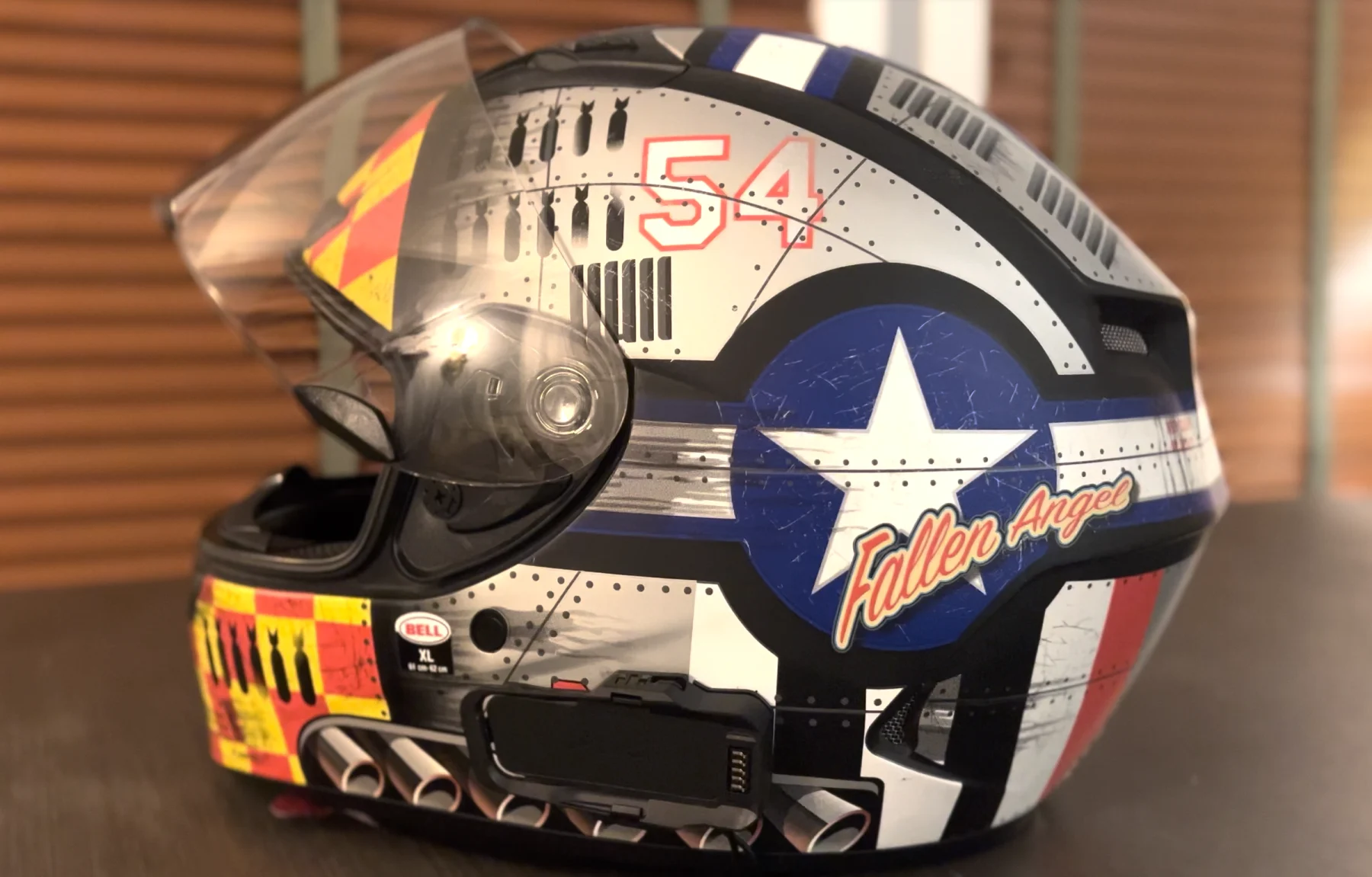
This seamless transition between light and dark settings has become indispensable. Not only does it provide eye comfort, but it also enhances overall visibility and safety—a feature that I’ve seen only in the upper echelons of motorcycle helmets.
Superb Airflow
Living in Upstate New York, I’ve experienced every kind of weather imaginable. The Bell Qualifier DLX Mips has been my steadfast companion through hot, humid summers and frigid winter rides. One aspect I particularly appreciated was the helmet’s ventilation system.
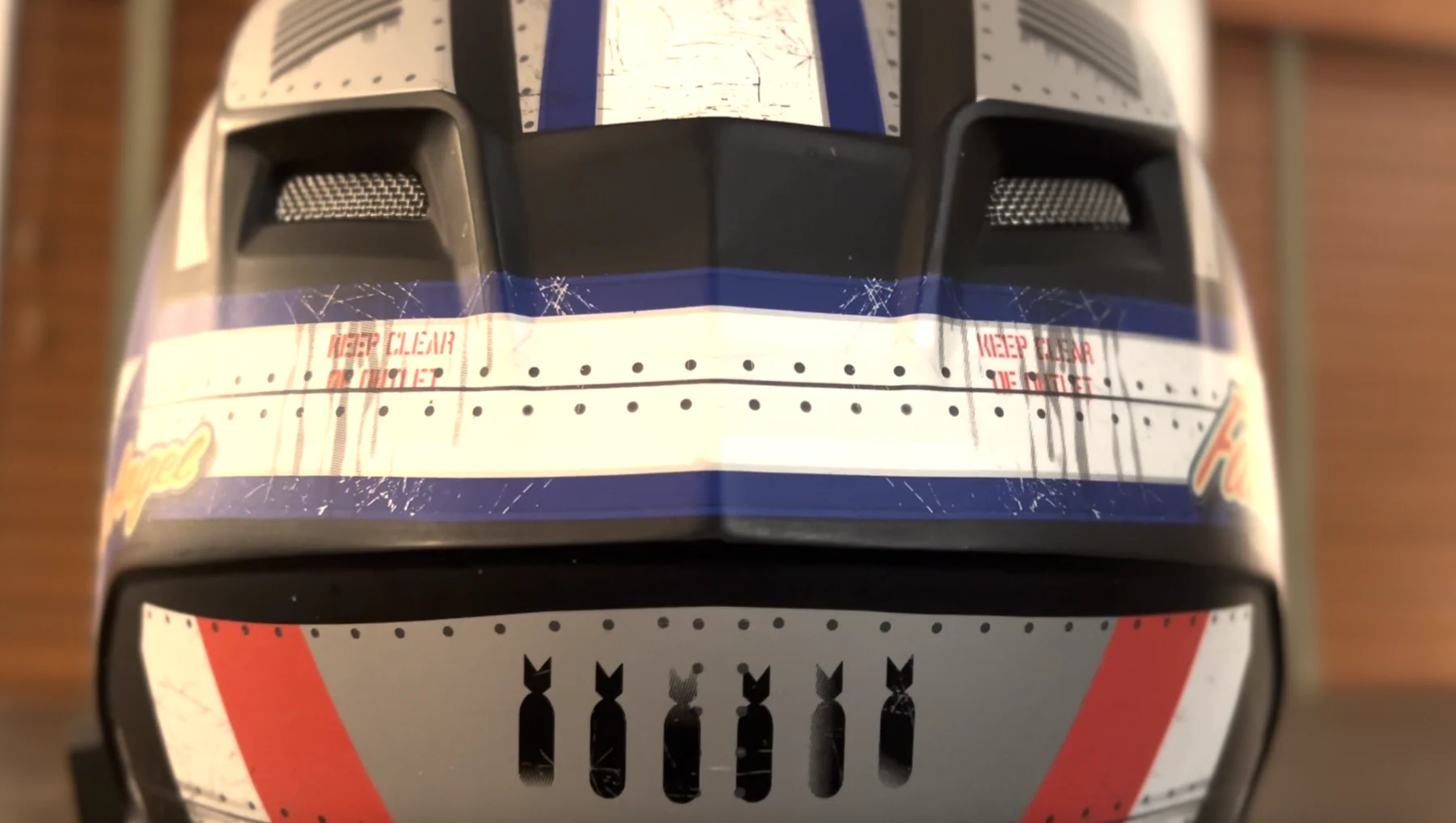
With an adjustable airflow design, it’s engineered to keep you cool during those sweaty, summer commutes. On long rides, the ample airflow creates a refreshing wind tunnel effect that makes even the longest days on the road surprisingly comfortable.
However, there’s a flip side. On cold winter days, I noticed that even when I closed the vents, there was still a surprising amount of airflow creeping in around the helmet. On a recent ride across a local frozen lake, I found that the persistent drafts made it hard to keep my face and head warm.
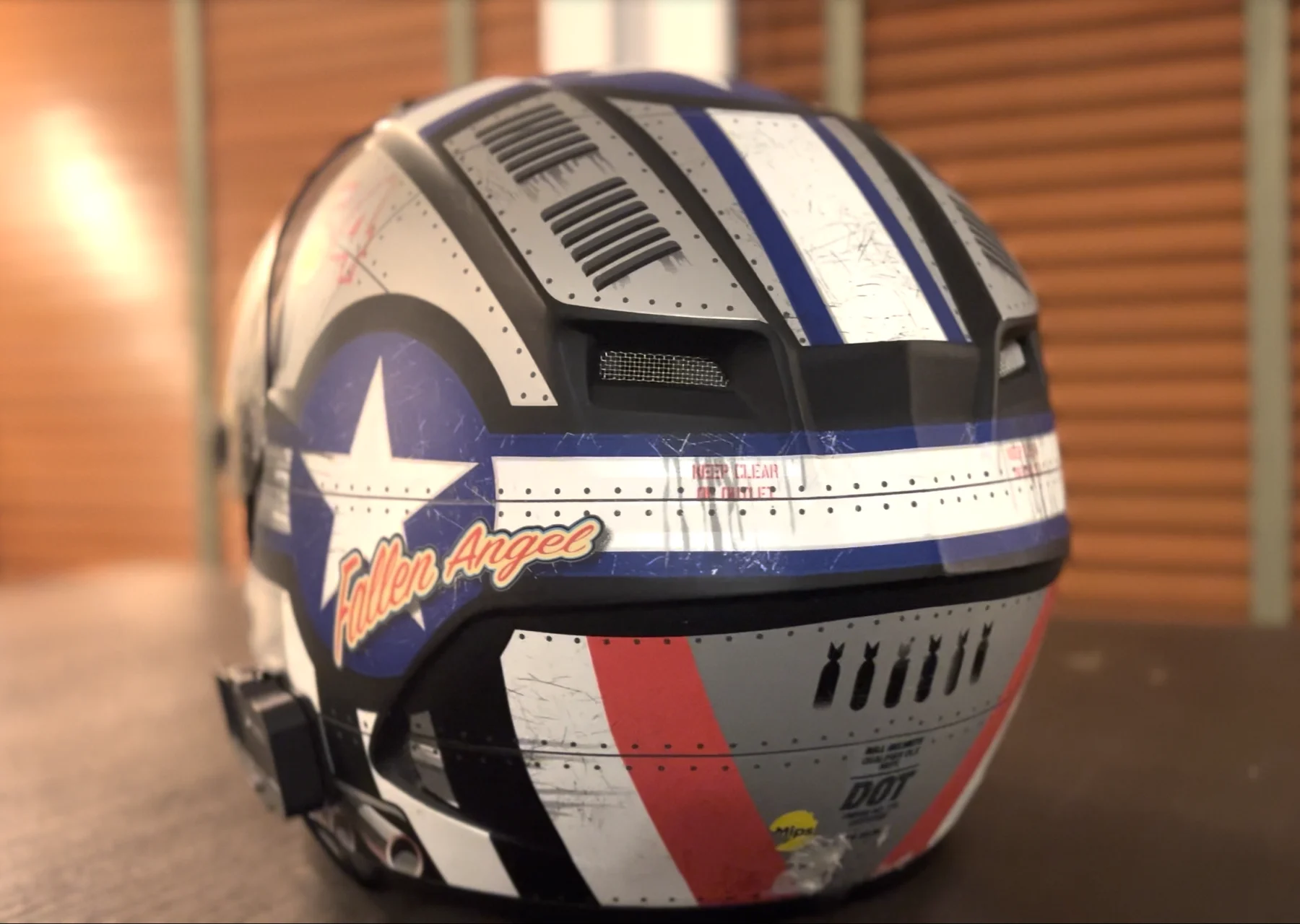
This meant that I had to adapt by wearing a thin balaclava under the helmet. It’s a minor inconvenience in exchange for the helmet’s many benefits, but it’s worth noting for those riding in consistently cold conditions.
Weight and Balance
Due to neck injuries, Buzz of the Armchair Biker’s team is sensitive to weight and balance with helmets. The Bell Qualifier DLX Mips impressed us on this front as well. Despite not being constructed from a super-light carbon fiber shell, the helmet manages a respectable weight of about 3.57 lbs. The weight distribution is finely tuned so that even on long rides—where every ounce counts—both of us at Armchair Bikers barely notice the load on our necks.

Bell managed to balance that weight super well (rare for a basic polycarbonate helmet) so that even on multi-hundred mile rides in summer heat, I barely felt the weight.
Mips Layer
One of the standout features of the Bell Qualifier DLX Mips is its integration of the Mips system. My first experience with Mips was with a higher end mountain bike helmet, so I was instantly sold on the concept of additional rotational impact protection in a motorcycle helmet. We’re starting to see Mips on some motorcycle helmets, but it’s not as common as it should be.
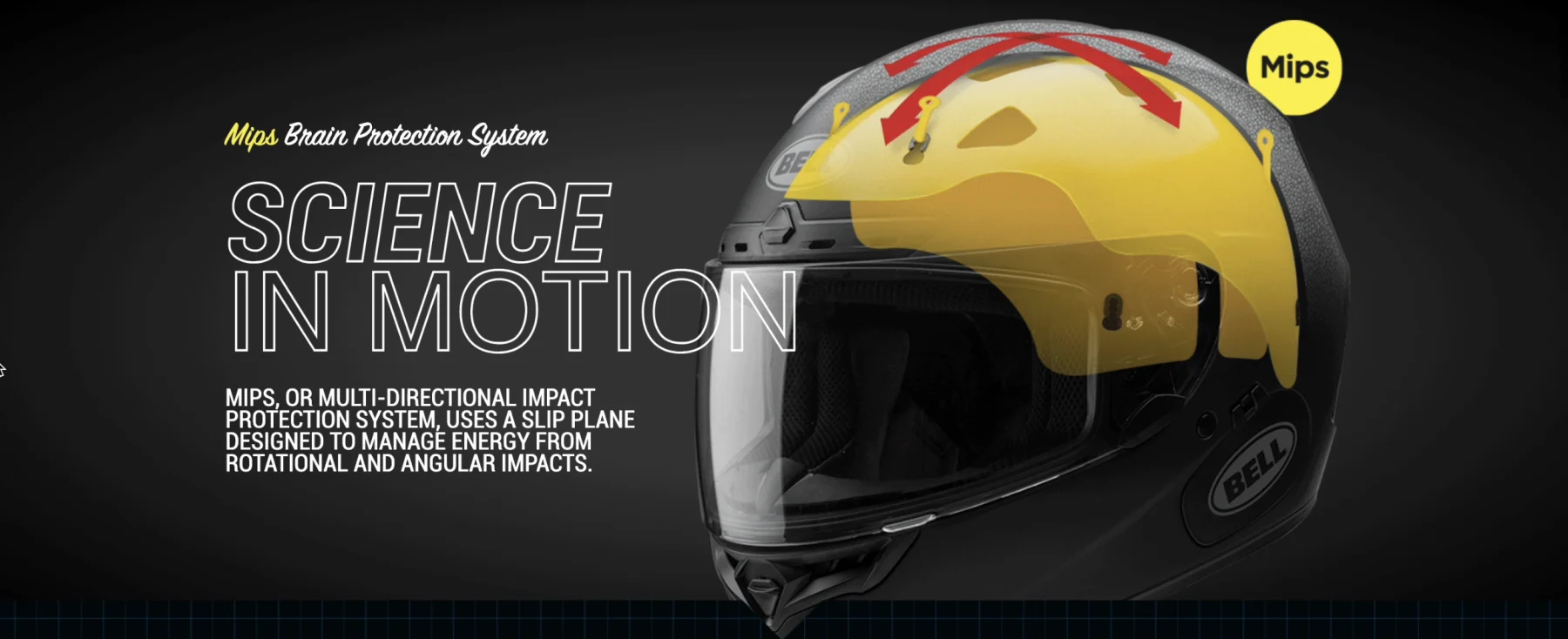
Mips is designed to reduce rotational forces during an impact by allowing the helmet to move slightly relative to the head, thereby mitigating some of the forces transmitted to the brain. This level of advanced safety is rarely seen in budget helmets (or even premium ones for that matter). Big ups to Bell for including this, as they’re starting to across their entire lineup.

Integrating Comms
We should note that we integrated a Cardo Packtalk Edge communicator into this lid with no issues. To my delight, the Bell Qualifier DLX Mips proved surprisingly accommodating.

The interior is fully removable and washable—so it was a breeze to install the Cardo system. I found ample space for the wiring and speakers, and the fact that I could remove the interior for a seamless install was a game-changer. It allowed for a secure installation that didn’t interfere with the helmet’s structural integrity or its comfortable fit. This compatibility meant that even if you’re a tech enthusiast like me, you won’t have to compromise on the helmet’s performance or aesthetics.
Those Looks
Simply put, I hate boring helmets. I love when companies create badass designs for their helmets as it allows you to put a little bit of your personality into your riding gear. ICON is an example of a company that has awesome designs and I’m glad to see Bell also giving customers options to express themselves.
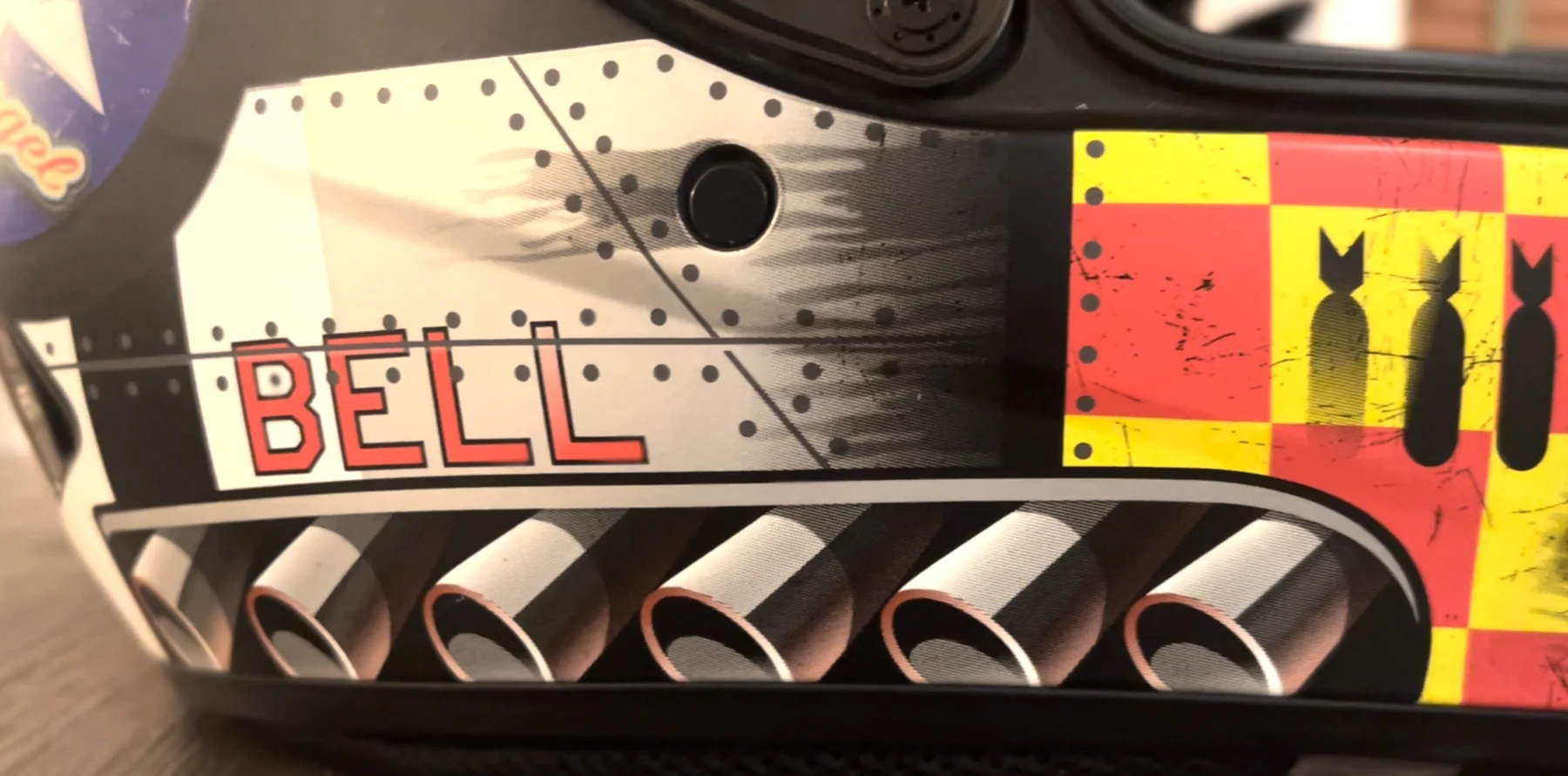
The Armchair Biker team has this lid in an aircraft-inspired design – the paint is very detailed and looks great. While this particular design is no longer available, there is a similar version currently sold.
What We Don’t Love
There are very few drawbacks to this helmet; for its price point, it outperforms the competition. That said, the few gripes we did run in to testing this through all four seasons of New York weather:
When it’s Cold, You’re Cold
The airflow in this helmet is great… until it’s 30 degrees F and your face feels like it’s pressed up against a blast freezer. Even with the vents closed, air sneaks in through the bottom and around the shield more so that in other helmets similar to this one.

If you’re crazy enough to ride in the winter, wear a balaclava under the helmet – you’ll need it. For summer and hot weather riding, this level of airflow is a big advantage.
Highway Wind Noise
That great airflow also brings another drawback: serious wind noise. It’s far from deafening, but above 70 mph, you’ll hear the wind. If you’re used to a premium helmet like a Shoei, this will be noticeable. But, it’s par for the course with helmets in the same budget price range.
Earplugs are always the solution here.
Shield Mechanism Quality
I love how easy it is to pop the shield off for cleaning, but after a year of use, one side of the visor feels looser than the other. It still locks in place, but the spring tension has weakened slightly.
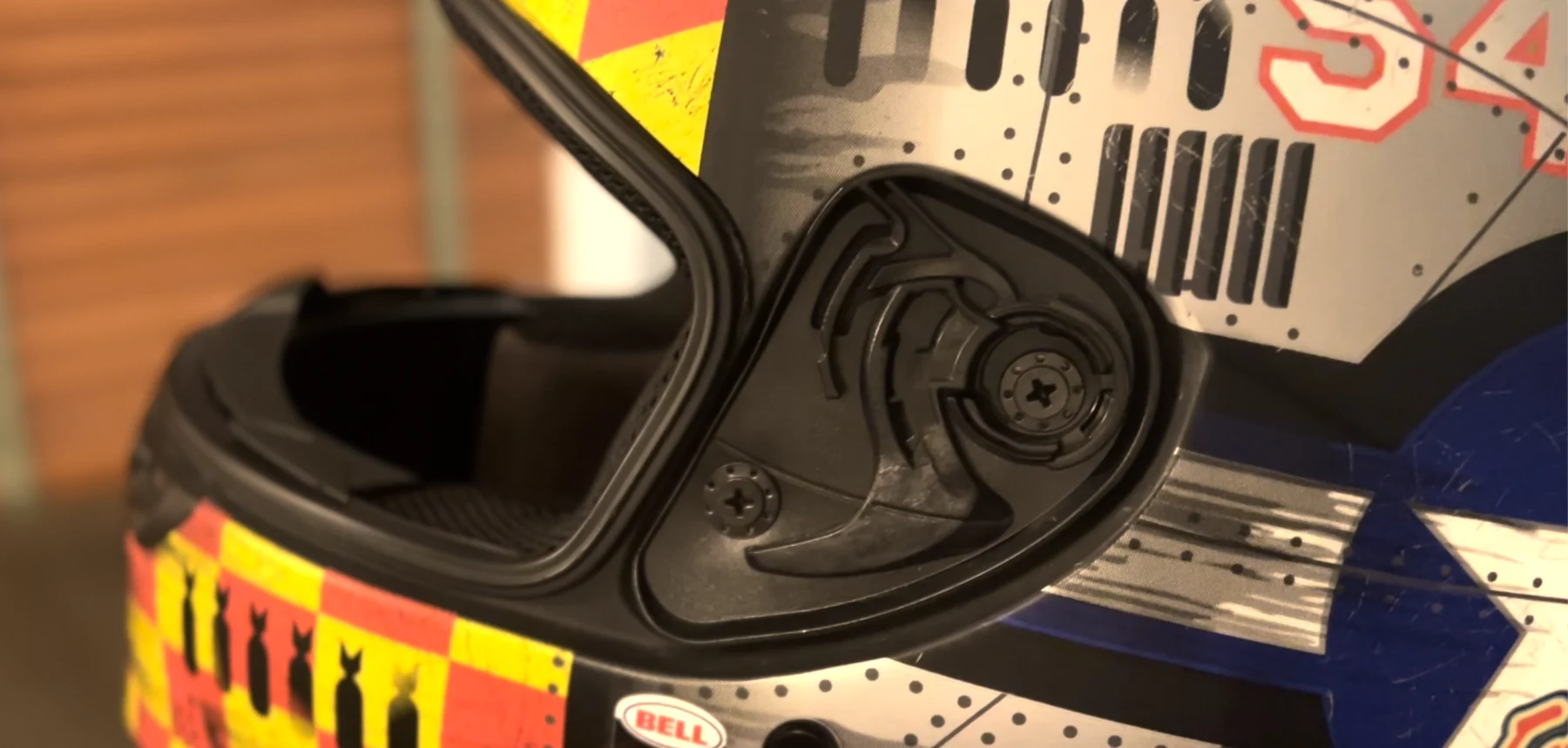
Will it break? Probably not. But it doesn’t feel as rock-solid as the rest of the helmet. Minor build quality issue, but again nothing that isn’t typical of a helmet under $500. They all have their quirks, even some premium helmets.
Comparisons
The Bell Qualifier DLX Mips is a strong contender in the sub-$300 price range, offering features that are rare at this price point. But how does it compare to other helmets in the same category? Here’s how it stacks up against three key competitors, all with that fantastic Mips system: the ICON Airform Mips, Bell Lithium Mips, and Sedici Strada 3 Mips.
VS ICON Airform Mips

The ICON Airform Mips is a direct competitor with a similar aggressive design and Mips safety system. Both helmets cater to street riders looking for a balance of style, airflow, and protection.
Where the Bell Qualifier DLX Mips has the edge is in its ProTint photochromic shield, which comes included. This is a major advantage for riders who don’t want to carry multiple visors or deal with swapping out shields as light conditions change. The Bell is also slightly lighter, which makes a difference on longer rides.
Where the ICON Airform Mips pulls ahead is in its graphic options and noise. ICON is known for bold designs, and if having a helmet that stands out matters to you, this is where the Airform wins. It also does a slightly better job at reducing wind noise at highway speeds.
The ICON does not include a photochromic shield, meaning you’ll need to purchase an additional tinted visor if you want that functionality. The shield-changing mechanism on the ICON is also stiffer and requires more effort than Bell’s ClickRelease system.
For riders who prioritize visor technology and safety, the Bell Qualifier DLX Mips is the better option. For those who want a quieter ride and more graphic choices, the ICON Airform Mips is worth considering.
VS Bell Lithium Mips

Both helmets come from Bell, and both include Mips for rotational impact protection. The look is very similar as well, so the difference sits in the details.
The Lithium has a drop down sun visor instead of that photochromatic shield in the DLX, and it’s a bit heavier at 3.81 lbs. However, you do get a Pinlock shield in the box (great for anti-fog) and a lower price point.
The DLX feels like a slightly more premium version of the Lithium, but you pay for that.
A high-performance helmet with enhanced visibility and MIPS technology for superior protection.
- Wide field of view even with the shield raised
- MIPS technology for advanced impact protection
- Comfortable fit with soft antimicrobial liners
- Slightly heavier than some competitors (3.81 lbs)
Bell Qualifier DLX Mips vs. Sedici Strada 3 Mips

The Sedici Strada 3 Mips is the closest competitor to the DLX in our opinion.
The Bell Qualifier DLX Mips stands out because of its ProTint shield, which Sedici does not include. If you ride in varying light conditions and don’t want to deal with carrying or swapping visors, this is a major advantage. The Bell is also slightly better ventilated, making it a strong choice for warm-weather riding.
Where the Sedici Strada 3 Mips has the edge is in its fiberglass composite shell (better at impact dispersion than plexiglass), lighter weight, and more shell sizes (four) with six EPS sizes providing a better fit. You also get a drop down sun shield and the visor comes Pinlock ready (though you have to buy it yourself).
Kind of a toss up between these, but keep in mind that photochromatic visor is going to cost you $120 to add to the already pricier Sedici Strada 3.
A premium, lightweight helmet with advanced MIPS protection and aerodynamic design for all riding positions.
- Advanced MIPS impact protection
- Lightweight fiberglass shell
- Excellent ventilation
- Pinlock insert sold separately
The Verdict
The Bell Qualifier DLX MIPS is a helmet that defies expectations. It delivers MIPS rotational impact protection, a ProTint photochromic shield, and solid ventilation—features typically found on helmets that cost significantly more. After thousands of miles in all kinds of conditions, it’s clear that this helmet isn’t just another budget-friendly option. It’s a serious contender for commuters, weekend riders, and anyone looking for a high-value full-face helmet.
This helmet is at its best in warm weather and daily commuting. The ventilation system provides excellent airflow, making it a good fit for summer days. The ProTint visor is a standout feature, eliminating the hassle of swapping visors or dealing with sunglasses on the road. And with MIPS technology built in, it offers extra protection against rotational impacts—a nice inclusion at this price.
However, it’s not the perfect fit for every rider. The wind noise at highway speeds is noticeable, especially if you’re used to a premium helmet. And while the ventilation is great in summer, it lets in too much cold air in winter. If you do a lot of long-distance highway touring or ride in freezing conditions, there are quieter and more insulated helmets that may suit you better.
Who Should Buy This Helmet?
The Bell Qualifier DLX MIPS is an excellent choice for riders who want a feature-rich helmet without breaking the bank. It’s particularly well-suited for:
- Daily commuters and weekend street riders who want a comfortable, full-featured helmet at a reasonable price.
- Warm-weather riders who appreciate strong airflow and ventilation.
- Riders who hate visor swaps or drop down sun visors and want a photochromic shield included.
- Those who value safety and want MIPS technology without spending premium prices.
However, it may not be the best choice for:
- Winter riders who need better insulation—the venting system lets in cold air, even when closed.
- Highway riders who prioritize quietness—at 70+ mph, wind noise is noticeable.
- Those looking for a super-lightweight helmet—while well-balanced, it’s not as light as carbon-fiber or fiberglass options (yet also not as expensive!)
For the price, the Bell Qualifier DLX MIPS punches well above its weight class. It competes with helmets that cost much more while offering a combination of safety, comfort, and convenience that is rare in this price range. If you’re looking for an affordable, feature-packed helmet that doesn’t cut corners on protection, it’s a strong contender.
With Mips force-reduction safety tech and a photochromatic visor that changes with the sun, this lid punches way above it's budget weight class.
- Excellent airflow keeps you cool on hot rides
- MIPS adds enhanced rotational impact protection
- Photochromic visor adapts to changing light
- Comfortable liner, easy to wash and adjust
- Noticeable wind noise, especially above highway speeds
- Feels cold in low temps due to strong ventilation
Related

Carbon Fiber Modular Helmets: Ultimate Flip-Up Lids
Discover carbon fiber modular helmets that deliver flip-up convenience, lightweight strength, and serious protection for every ride.

